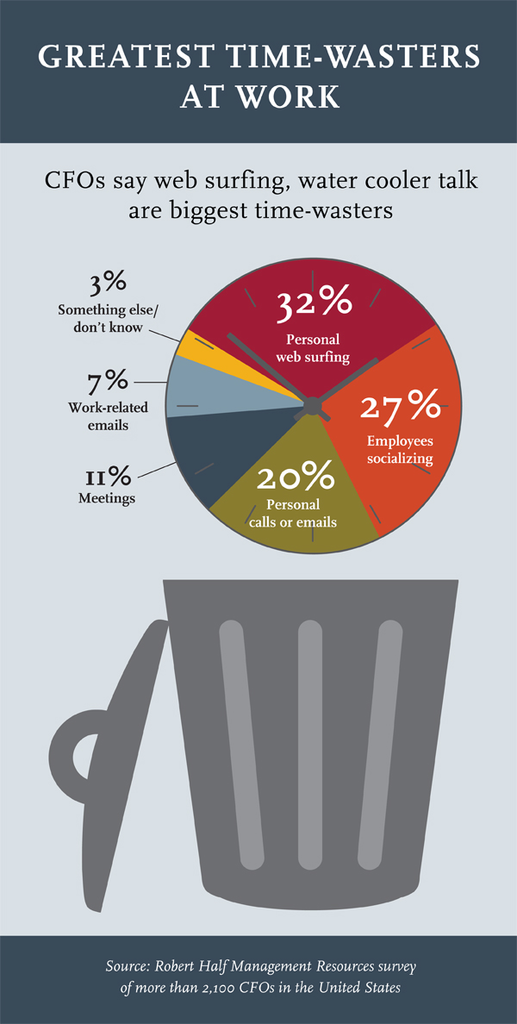Accounting
Business Execs List Top Wastes Of Time At Work
A new study by executive staffing firm Robert Half International shows that web surfing and water cooler chatter top the list when it comes to non-productive employee time at work.
Feb. 13, 2014

Admit it: You've gone shopping online, posted to Facebook, or caught up with the latest sports news about your favorite team, while you were at work. You're not alone, of course.
A new study by executive staffing firm Robert Half International shows that web surfing and water cooler chatter top the list when it comes to non-productive employee time at work. The survey which questioned 2,1000 chief financial officers across the United States, showed that nearly one third (32 percent) of executives interviewed said that personal internet use is the leading time waster. Good old fashioned water cooler chat and gossip came in second at 27 percent.
About 11 percent of the financial executives surveyed said that meetings drain significant time, especially at larger organizations with more than 1,000 employees, where meetings received 19 percent of the response.
CFOs were asked, “Which one of the following is the greatest time-waster at work for employees?” Their responses:
|
Non-business related Internet use (including social media) |
32% |
|
Employees chatting and socializing |
27% |
|
Personal calls or emails |
20% |
|
Meetings |
11% |
|
Work-related email |
7% |
|
Other/don't know |
3% |
|
100% |
“Chatting with coworkers and attending to personal activities during breaks at the office are acceptable within reason. Balancing professional and personal obligations often requires completing non-work tasks during business hours,” said Paul McDonald, Robert Half senior executive director. “But too many distractions can detract from individual and team productivity.”
McDonald added, “If employees are spending too much time on non-work related tasks, identify why. They may have too little or too much on their plates. Find the right mix of assignments, and if they're feeling disengaged, give staff more exciting or challenging projects.”
